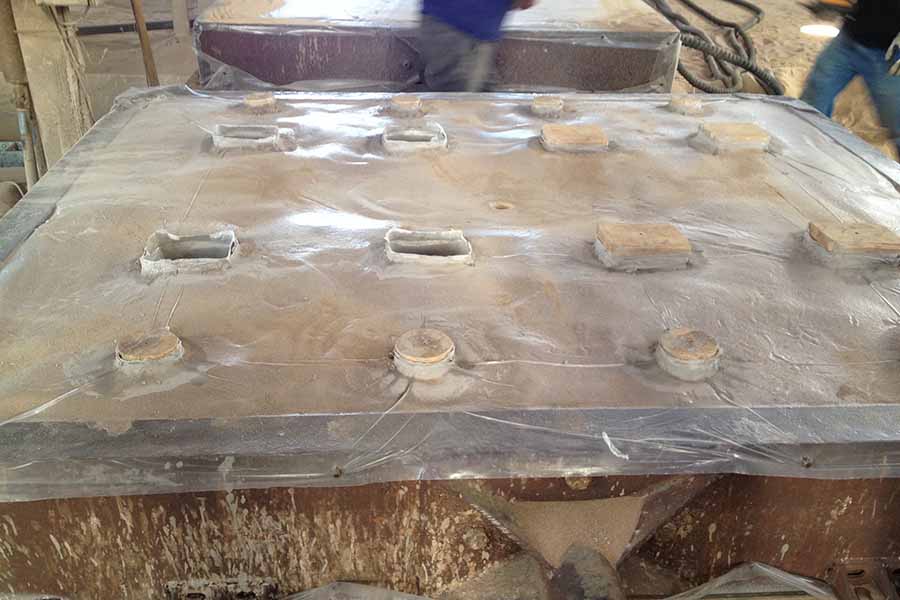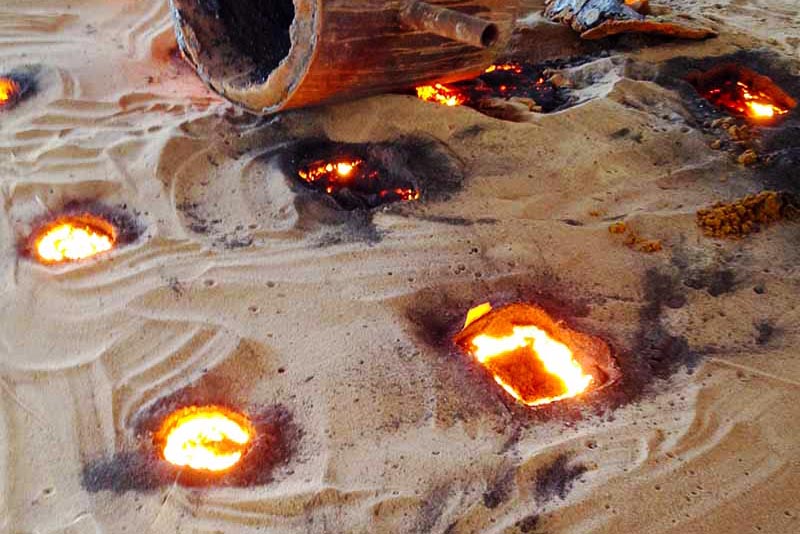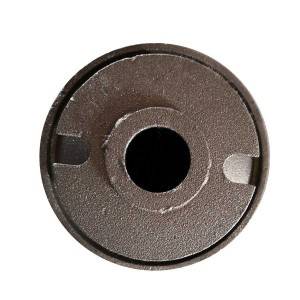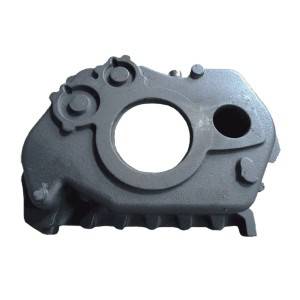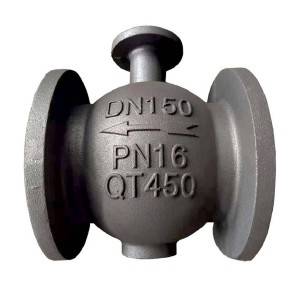Vacuum Casting is also called Negative Pressure Sealed Casting, Reduced Pressure Casting or V Process Casting. Vacuum pressure casting requires the use of air extraction equipment to extract the air inside the casting mold, and then use the pressure difference between the inside and outside of the mold to cover the heated plastic film on the pattern and template. The casting mold will become strong enough to withstand the molten metal during casting. After obtaining the vacuum mold, fill the sand box with dry sand without binder, and then seal the top surface of the sand mold with the plastic film, followed by vacuum to make the sand firm and tight. After that, remove the mold, put the sand cores, close the mold to make everthing ready for pouring. Finally, the casting is obtained after the molten metal is cooled and solidified.
Ductile cast iron, which is represent a group of cast iron, also called nodular iron. Nodular cast iron obtains nodular graphite through spheroidization and inoculation treatment, which effectively improves the mechanical properties of the cast iron, especially the plasticity and toughness, so as to obtain higher strength than carbon steel. Ductile iron is not a single material but is part of a group of materials which can be produced to have a wide range of properties through control of the microstructure. The common defining characteristic of this group of materials is the shape of the graphite. In ductile irons, the graphite is in the form of nodules rather than flakes as it is in grey iron.
Advantages of Vacuum Casting Process
1) The vacuum castings have high dimensional accuracy, clear outline and smooth surface.
Because the surface of the model is covered with plastic film, there is no need to vibrate or knock when pull the mold. The suction and negative pressure make the molding sand compact, and the hardness of the sand mold is high and uniform. Under the heat of molten metal, the cavity is not easy to deform. Moreover, the existence of negative pressure is conducive to the full filling of molten metal into the model. The surface roughness of V process castings can reach Ra = 25 ~ 2.5μm. The dimensional tolerance level of castings can reach CT5 ~ CT7. The appearance quality of negative pressure castings is good, and the internal quality is reliable.
2) There are no binders, water and additives in the molding sand, which makes the sand processing simple.
3) It is simple to clean the vacuum castings. Less harmful gases are generated during the casting process.
4) The vacuum castings could be used at a wide range of industries. It can be used for single-piece small batch production as well as mass production, especially large and medium-sized castings and thin-walled castings are more suitable for vacuum casting.
Why You Choose RMC Foundry for Custom Vacuum Castings?
• Easy recovery of the sand because the binders are not used
• Sand does not require mechanical reconditioning.
• Good air permeability because there is no water is mixed with sand, therefore less casting defects.
• More suitable for large scale castings
• Cost effective, especially for large castings.
